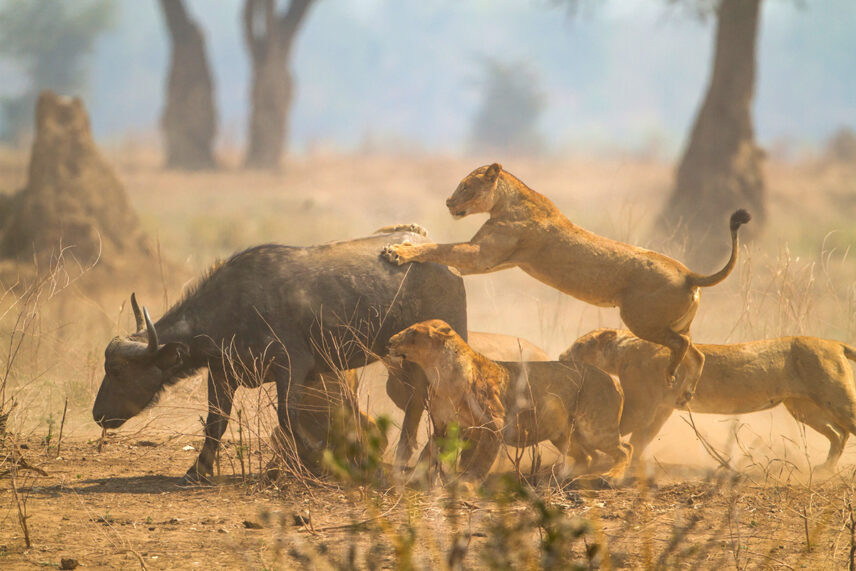The life of the African lion (Panthera leo) is a literal race for survival. They stake their lives—and the lives of their pride mates—on their ability to win high-speed races against prey over and over again. But left to speed and strength alone, they’d have no chance; thus, lions employ complex strategies to (literally!) stay one step ahead.
If you’re lucky enough to spot a lion hunt on safari, you’re in for a treat. It’s an action-packed and extremely memorable snapshot of the circle of life. It usually happens in four phases—let’s break them down one at a time!
1. Prowling
Being an apex predator is hard and dangerous work. Lions need an average of 12 pounds of meat a day, and they tend to hunt every three or four days just to get by. But what’s on the menu? Well, depends on what’s close at hand…err, paw. Lions don’t mind a helping of dik-dik or warthog when it’s convenient. But really, they prefer to dig their fangs into meatier fare: usually zebras, buffaloes and wildebeests.
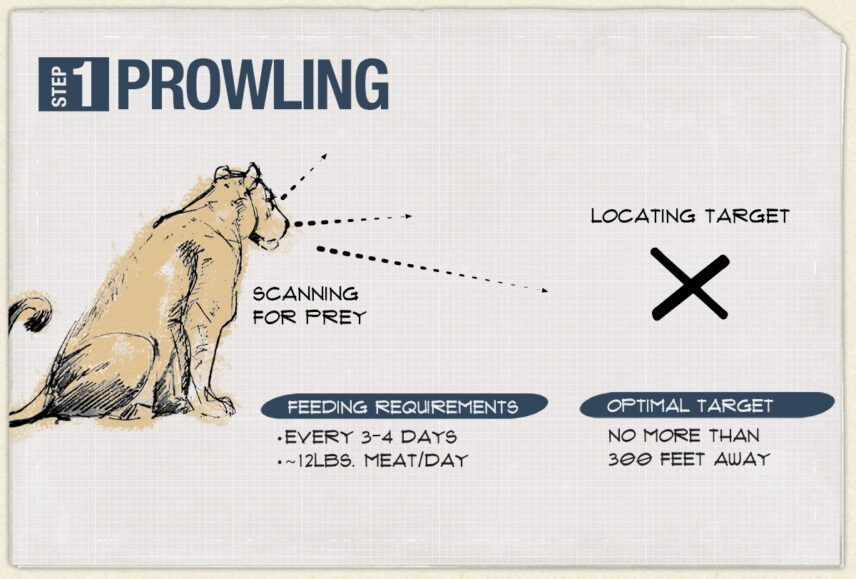
Once a lion finds a target, the stalking phase begins.
2. Stalking
Head lowered, ears flattened, the hunting lion (almost always female) follows her prey. Depending on the size of her pride and the strength of her target, she may hunt alone, with a partner or with a group.
When hunting as a group, her lion allies will usually spread out stealthily to flank their prey. Given that they hunt best in short, powerful bursts, they try to get within 100 feet before striking. They can only run at top speed for about 300 feet, and just don’t have the stamina for a drawn-out chase.
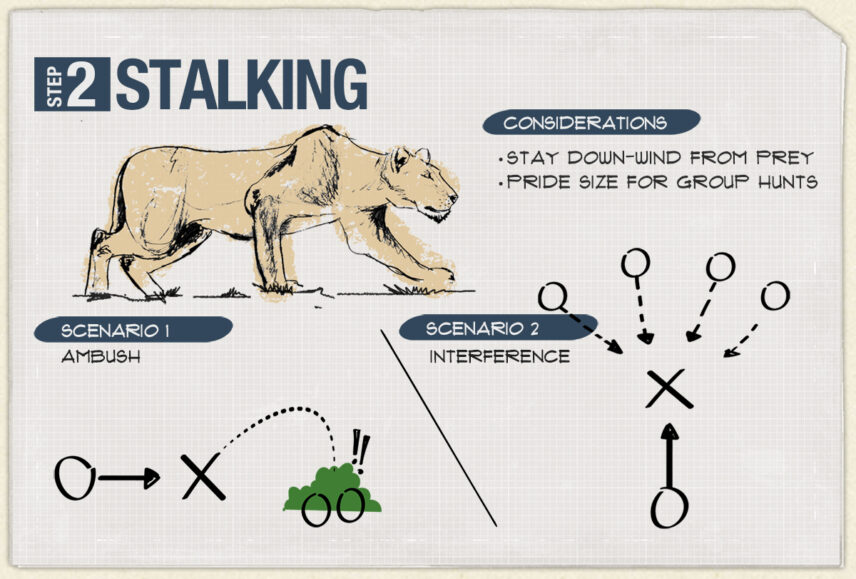
Especially in group hunts, lions employ deep tactical planning to maximize their chance of success. They have different plans for different animals, which usually derive from their main tactic of circling a herd and isolating a weaker, older animal. Some variations:
- SCENARIO 1:
One lion may approach upwind (so their scent doesn’t give them away) with the intention of scaring the prey into the jowls of the pride, who hide in ambush. - SCENARIO 2:
A support group may advance on the flanks of the prey and run interference while another lion lunges for the kill.
Lions are extremely patient hunters, sometimes waiting hours in near-perfect stillness for the perfect moment to strike. Their limited stamina requires it–they must maximize the surprise factor if they want a meal.
Once their prey wanders close enough, they pounce!
3. Pouncing
The lion sprints at the startled prey, teeth bared and claws ready. The other lions may charge in for the takedown or close off escape routes until the prey is surrounded and weak. These battles follow a pattern of attack, evasion, counter and parry; they can last anywhere from a minute to half an hour.
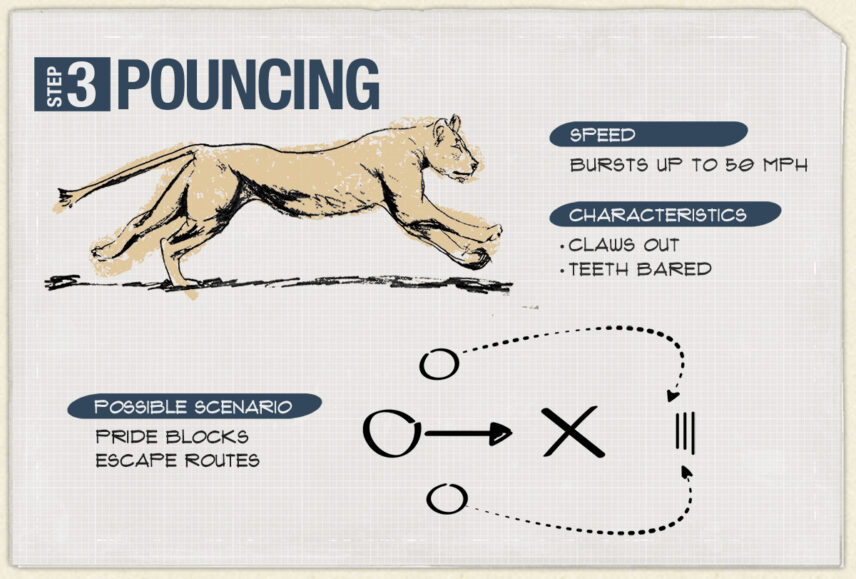
Once the lions get their jaws around the prey’s throat, the fight’s over–the lions have won. Then, the feast begins.
4. Feasting
When lions dig in, they usually start with the prey’s belly, the most nutritious part of the body. But the end of the hunt doesn’t mean an end to the fighting–most of the time, the pride’s male lion will steal the prey from the female hunters and eat first–talk about rude!
Then, the females eat, followed by the cubs who are left with the scraps. Often, they growl, snarl and bicker with each other over the last cuts of the carcass.
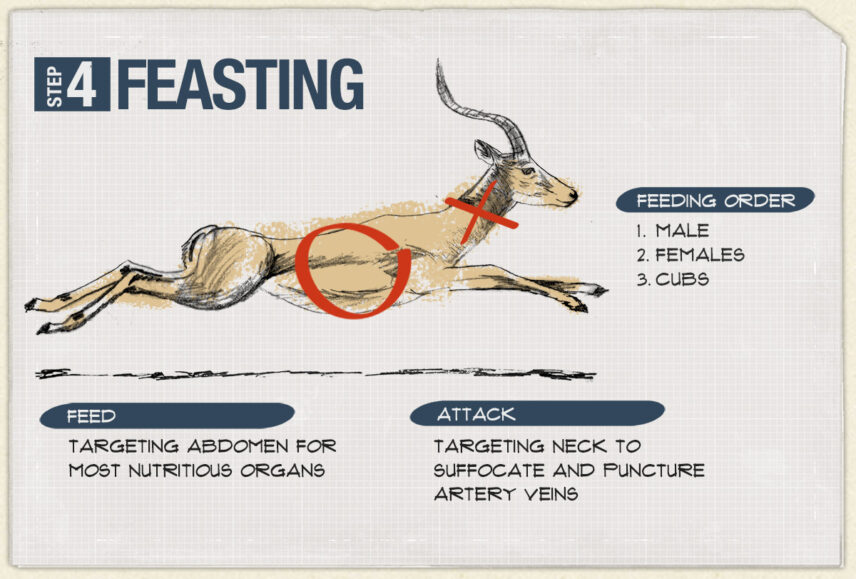
Meanwhile, vultures come soaring in, waiting patiently for the lions to finish. Scavengers such as hyenas and jackals follow the vultures like guides to the site of the hunt. It creates a strange sight: an audience of scavengers waiting patiently for the pride to eat–hence the expression, “the lion’s share.” Waiting can last 1 day, 2 days, 3 days or more!
When the lions do leave, another spectacular fight breaks out among the scavengers for the scraps.
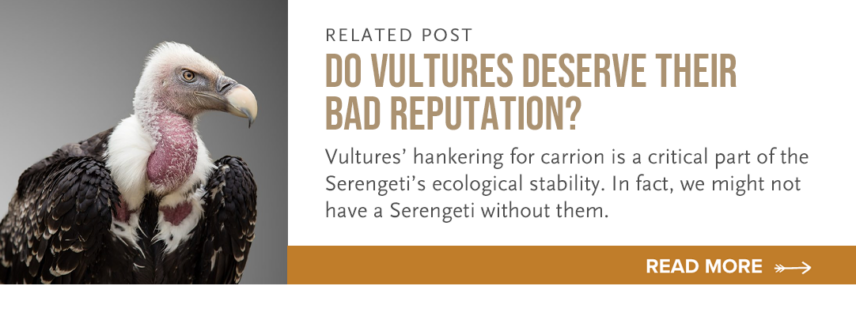
By that point, the pride has moved on, bellies full and faces drenched in blood. A few days later, they’ll grow hungry once more–and the circle of life will begin again.
